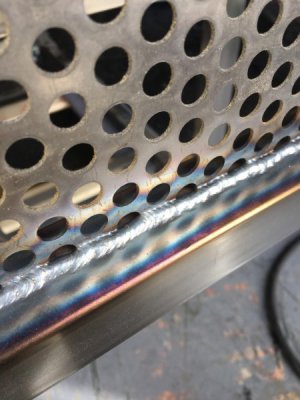I'm using 75/25. The regulator just measures pressure--I don't have a flow gauge. I've got the pressure set a little above 30 psig. Next time I fire it up I'll have to make sure I'm getting flow out the nozzle. I can add a rotometer, but doubt I need one.
30 is too high. 12 to 15 should be sufficient. You should be able to hear and feel the gas coming out. My machine has a purge setting that allows purging the lines or air and filling with gas before welding. If I don't purge at the beginning of a session, the start of my weld will look like yours. If you don't have a purge setting, you can release tension on the drive or turn wire feed to 0 and pull the trigger to purge. But since all of your welds have the porosity, I think there is an issue with a lack of shielding gas coverage. It could be due to the issues Mikey stated, but something is wrong with the coverage. Also if you are welding on hot rolled steel, you will need to grind off all of the mill scale to get the best looking welds. Make sure you are getting a good ground. At first, try sticking with the settings on the door chart as someone else mentioned and see if that helps. Try holding your torch closer to the work piece also.
That is a real nice machine and you will get it figured out soon.
Brad



